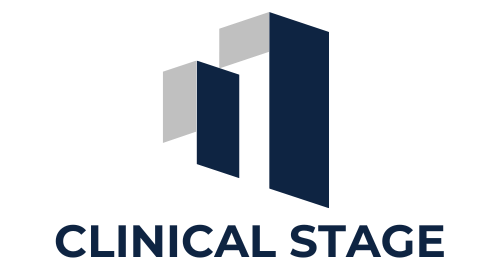Risk-Based Monitoring in Clinical Trials
Clinical trials are the cornerstone of medical research, ensuring the safety and efficacy of new treatments before they reach patients. A critical aspect of these trials is monitoring, which involves the systematic oversight of all trial activities to ensure compliance with regulatory requirements, adherence to the study protocol, and protection of participants' rights and well-being. As clinical trials have grown in complexity, the traditional approach to monitoring—where every detail is scrutinized with equal intensity—has become increasingly impractical and costly. This has led to the development of Risk-Based Monitoring (RBM), a more efficient and effective strategy.
Risk-Based Monitoring (RBM) represents a paradigm shift in how clinical trials are overseen. By focusing resources on the most critical data and processes, RBM enhances trial quality while optimizing costs. This approach leverages risk assessment to identify and prioritize potential issues, allowing for more targeted and proactive management. The significance of RBM cannot be overstated, as it promises to streamline clinical trial operations, improve data integrity, and ultimately accelerate the delivery of new therapies to market.
This blog will delve into the fundamentals of Risk-Based Monitoring, exploring its principles, benefits, and implementation strategies. We will examine the driving factors behind the adoption of RBM, its impact on the clinical trial landscape, and best practices for successful deployment. Whether you are a researcher, sponsor, or regulatory professional, this comprehensive overview will provide valuable insights into how RBM is transforming clinical trial monitoring.
Understanding Risk-Based Monitoring (RBM)
Risk-Based Monitoring (RBM) is a strategic approach to clinical trial oversight that prioritizes resources and activities based on the assessment of risks that could affect the trial’s outcomes. The key principles of RBM involve identifying critical data and processes, assessing potential risks, implementing targeted monitoring plans, and continuously reviewing and adjusting the approach based on emerging data and findings. By focusing on areas that have the greatest potential to impact patient safety and data integrity, RBM ensures that trials are conducted more efficiently and effectively.
Historical Context: Traditional Monitoring vs. RBM
Historically, clinical trial monitoring has relied on a conventional model known as 100% Source Data Verification (SDV). This method involves on-site visits to review all data entries against original source documents, ensuring accuracy and compliance. While thorough, this approach is labor-intensive, time-consuming, and expensive. As trials have grown in complexity and scale, the limitations of traditional monitoring have become apparent, prompting the need for more adaptive and cost-effective strategies.
Risk-Based Monitoring emerged as a response to these challenges. Unlike traditional monitoring, RBM employs a data-driven, centralized approach. By leveraging advanced technologies and statistical methods, RBM enables continuous risk assessment and monitoring throughout the trial. This shift allows for early identification of potential issues, targeted interventions, and more efficient use of resources, ultimately enhancing trial quality and reducing costs.
Objectives of Implementing RBM in Clinical Trials
The primary objectives of implementing RBM in clinical trials are multifaceted:
- Enhance Data Quality and Integrity: By focusing on critical data points and processes, RBM aims to improve the overall quality and reliability of trial data. This targeted approach helps ensure that the most significant aspects of the study are meticulously monitored and maintained.
- Increase Operational Efficiency: RBM reduces the need for extensive on-site monitoring visits, thereby saving time and resources. This efficiency allows for quicker identification and resolution of issues, accelerating the trial timeline.
- Optimize Resource Allocation: Resources are directed towards the most critical areas, reducing unnecessary expenditures and improving cost-effectiveness. This strategic allocation ensures that monitoring efforts are concentrated where they are most needed.
- Enhance Patient Safety: By continuously assessing risks and monitoring critical variables, RBM helps identify potential safety concerns early, allowing for prompt corrective actions. This proactive approach enhances the protection of trial participants.
- Facilitate Regulatory Compliance: RBM ensures that trials comply with regulatory requirements by maintaining rigorous oversight of critical processes and data. This compliance is crucial for the successful approval and commercialization of new treatments.
Implementing RBM in clinical trials is not just a shift in methodology; it represents a fundamental change in how trials are conducted and overseen. By embracing this innovative approach, stakeholders can ensure higher-quality outcomes, greater efficiency, and improved safety for all participants involved.
Key Components of Risk-Based Monitoring
Risk Assessment and Categorization
A foundational element of Risk-Based Monitoring (RBM) is the thorough assessment and categorization of potential risks. This process involves several critical steps:
- Identifying Potential Risks: The first step in RBM is to identify risks that could impact the trial’s success. These risks can arise from various sources, including protocol complexity, data variability, site performance, and participant safety. By leveraging historical data, expert judgment, and predictive analytics, stakeholders can anticipate potential issues before they arise.
- Categorizing Risks Based on Impact and Likelihood: Once identified, risks are categorized according to their potential impact and likelihood of occurrence. This categorization helps prioritize monitoring efforts, ensuring that the most significant and probable risks receive the most attention. High-impact, high-likelihood risks are addressed with rigorous monitoring strategies, while lower-impact or less likely risks are managed with less intensive approaches.
Centralized Monitoring
Centralized monitoring is a key component of RBM, enabling continuous oversight and data review from a central location. This approach leverages advanced technologies and analytical tools to enhance monitoring efficiency:
- Use of Centralized Data Review and Analytics: Centralized monitoring involves the systematic review of data across all trial sites using sophisticated data analytics. By employing statistical methods and machine learning algorithms, centralized monitoring can detect discrepancies, trends, and outliers that may indicate potential issues.
- Identifying Trends and Anomalies: Through continuous data analysis, centralized monitoring identifies patterns and anomalies that could signal problems such as data inconsistencies, protocol deviations, or safety concerns. Early detection of these issues allows for timely interventions, reducing the risk of significant trial disruptions.
On-Site Monitoring
While centralized monitoring plays a crucial role in RBM, on-site monitoring remains essential for certain aspects of trial oversight. However, in an RBM framework, on-site visits are more targeted and strategic:
- Targeted Site Visits Based on Risk Assessment: Rather than conducting routine visits to all trial sites, RBM focuses on sites that exhibit higher risks. These targeted visits concentrate on verifying critical data, ensuring protocol compliance, and addressing specific concerns identified through risk assessment.
- Ensuring Protocol Compliance and Data Accuracy: During on-site visits, monitors review key study documents, interview site staff, and verify data accuracy. This hands-on approach helps ensure that sites adhere to the study protocol and regulatory requirements, maintaining the integrity of the trial.
Adaptive Monitoring Strategies
One of the hallmarks of RBM is its adaptability. Monitoring plans are continuously updated based on ongoing risk assessments and emerging data:
- Adjusting Monitoring Plans Based on Ongoing Risk Assessments: As the trial progresses, new risks may emerge, and existing risks may evolve. RBM frameworks are designed to be flexible, allowing for adjustments to the monitoring strategy as needed. This dynamic approach ensures that monitoring efforts remain relevant and effective throughout the trial.
- Flexibility and Responsiveness in Monitoring Approaches: RBM’s adaptability allows for quick responses to new information. Whether it’s reallocating resources, intensifying monitoring at a particular site, or implementing corrective actions, the ability to swiftly adapt ensures that the trial remains on track and any issues are promptly addressed.
By integrating these key components, Risk-Based Monitoring offers a robust framework for overseeing clinical trials. This approach not only enhances the quality and efficiency of trials but also ensures that resources are used effectively, patient safety is prioritized, and regulatory compliance is maintained. In the next sections, we will explore the practical implementation of RBM, its benefits, and best practices for success.
Benefits of Risk-Based Monitoring
Risk-Based Monitoring (RBM) offers a multitude of advantages over traditional monitoring approaches, significantly enhancing the clinical trial process. Here are some of the key benefits:
Improved Efficiency and Resource Allocation
One of the primary benefits of RBM is the optimization of efficiency and resource allocation. By focusing monitoring efforts on the most critical aspects of the trial, RBM ensures that resources are used where they are most needed. This targeted approach reduces unnecessary on-site visits and minimizes redundant activities, freeing up resources that can be redirected to other vital areas of the trial. As a result, clinical trials can proceed more smoothly and swiftly, reducing the time to market for new therapies.
Enhanced Data Quality and Integrity
RBM’s focus on critical data points and processes significantly improves data quality and integrity. By prioritizing the verification of essential data and closely monitoring key variables, RBM helps ensure that the data collected is accurate, consistent, and reliable. This enhanced data quality is crucial for making informed decisions about the safety and efficacy of new treatments, ultimately contributing to better patient outcomes.
Early Identification and Mitigation of Risks
A core principle of RBM is the proactive identification and mitigation of risks. Through continuous risk assessment and centralized monitoring, potential issues can be detected early in the trial process. This early detection allows for prompt corrective actions, preventing minor problems from escalating into major issues that could jeopardize the trial. By addressing risks proactively, RBM enhances the overall robustness and reliability of the trial.
Cost Savings in Monitoring Activities
Traditional monitoring approaches can be costly, with extensive on-site visits and comprehensive data verification consuming significant resources. RBM reduces these costs by focusing efforts on high-risk areas and leveraging centralized monitoring techniques. This reduction in on-site visits and more efficient use of resources translate into substantial cost savings for sponsors and stakeholders. These savings can then be reinvested into other areas of research and development, further advancing medical innovation.
Better Compliance with Regulatory Requirements
Regulatory compliance is a critical aspect of any clinical trial. RBM enhances compliance by ensuring that monitoring efforts are concentrated on areas with the highest regulatory risk. By maintaining rigorous oversight of critical processes and data, RBM helps ensure that trials adhere to regulatory standards and guidelines. This compliance is essential for the successful approval and commercialization of new therapies, ensuring that they meet the stringent requirements set forth by regulatory authorities.
Implementing Risk-Based Monitoring
Successfully implementing Risk-Based Monitoring (RBM) requires a strategic approach, integrating well-defined plans, advanced technology, and robust training programs. Here’s a detailed look at the essential steps and considerations for effectively deploying RBM in clinical trials.
Developing an RBM Plan
A comprehensive RBM plan is the foundation of successful implementation. This plan outlines the risk assessment criteria, monitoring processes, and tools to be used throughout the trial.
- Defining Risk Assessment Criteria and Thresholds: The first step in developing an RBM plan is to establish clear criteria for assessing and categorizing risks. This involves identifying potential risks that could impact patient safety, data integrity, and overall trial outcomes. Each risk is then evaluated based on its potential impact and likelihood of occurrence, and specific thresholds are set for triggering monitoring actions. These criteria and thresholds guide the prioritization of monitoring efforts, ensuring that resources are focused on the most critical areas.
- Establishing Monitoring Processes and Tools: The RBM plan must also define the specific monitoring processes and tools to be used. This includes detailing how risks will be monitored, the frequency of monitoring activities, and the roles and responsibilities of the monitoring team. Effective processes ensure that risks are continuously assessed and managed throughout the trial, maintaining data quality and compliance.
Technology and Tools for RBM
Advanced technology plays a crucial role in enabling the efficient and effective implementation of RBM. Key tools and systems include:
- Utilizing Electronic Data Capture (EDC) Systems: EDC systems streamline data collection and management, providing real-time access to trial data. These systems facilitate centralized monitoring by allowing for immediate data review and analysis, enabling quicker identification of discrepancies and potential issues.
- Implementing Centralized Monitoring Platforms: Centralized monitoring platforms integrate data from multiple sites, providing a comprehensive overview of trial activities. These platforms use advanced analytics to detect trends, outliers, and anomalies that may indicate risks. By centralizing data review, these tools enhance monitoring efficiency and accuracy.
- Leveraging Advanced Analytics and AI: Advanced analytics and artificial intelligence (AI) are integral to RBM. These technologies analyze large volumes of data to identify patterns and predict potential risks. Machine learning algorithms can continuously learn from new data, improving the accuracy and effectiveness of risk assessments over time. AI-driven tools also enable predictive monitoring, allowing for proactive management of emerging risks.
Training and Collaboration
Effective implementation of RBM requires thorough training and strong collaboration among all stakeholders involved in the trial.
- Training Staff on RBM Principles and Practices: Comprehensive training programs are essential to ensure that all staff members understand RBM principles and practices. This includes training on risk assessment methods, data management tools, and monitoring techniques. Ongoing education and support help maintain high standards of monitoring throughout the trial.
- Fostering Collaboration Between Stakeholders: RBM implementation requires collaboration between various stakeholders, including sponsors, clinical research organizations (CROs), investigators, and regulatory authorities. Clear communication channels and collaborative tools facilitate information sharing and joint decision-making. Regular meetings and updates help ensure that all parties are aligned and working towards the same objectives, enhancing the overall effectiveness of the RBM strategy.
Challenges in Risk-Based Monitoring
While Risk-Based Monitoring (RBM) offers significant advantages, its implementation is not without challenges. Addressing these challenges is essential for realizing the full benefits of RBM and ensuring the smooth conduct of clinical trials.
Ensuring Data Accuracy and Reliability in Centralized Monitoring
One of the primary challenges in RBM is maintaining data accuracy and reliability, especially when relying heavily on centralized monitoring. Centralized monitoring depends on the integrity of data entered into electronic systems from various trial sites. Ensuring that this data is accurate and complete requires robust data validation processes, regular audits, and consistent data quality checks. Training site personnel on proper data entry practices and implementing automated data validation tools can help mitigate this challenge.
Balancing On-Site and Remote Monitoring Activities
Finding the right balance between on-site and remote monitoring is another critical challenge. While remote monitoring can be highly efficient, certain aspects of trial oversight still require physical presence at the sites. These include verifying source documents, ensuring proper storage and handling of investigational products, and building strong relationships with site staff. Developing a hybrid monitoring strategy that combines remote monitoring with targeted on-site visits can help achieve this balance, ensuring comprehensive oversight without overburdening resources.
Addressing Resistance to Change Within the Organization
Implementing RBM often involves significant changes to established processes and practices, which can encounter resistance within the organization. Staff members accustomed to traditional monitoring methods may be reluctant to adopt new approaches. Addressing this resistance requires effective change management strategies, including clear communication of the benefits of RBM, providing comprehensive training, and involving key stakeholders in the planning and implementation process. Demonstrating early successes and positive outcomes from RBM can also help build buy-in and support across the organization.
Managing Regulatory Expectations and Compliance
Regulatory agencies have specific requirements for clinical trial monitoring, and ensuring compliance with these requirements while implementing RBM can be challenging. Different regulatory bodies may have varying expectations, and demonstrating that an RBM approach meets these standards requires thorough documentation and clear justification of the monitoring strategy. Engaging with regulators early in the planning process and maintaining open communication can help align RBM practices with regulatory expectations and ensure that compliance is maintained throughout the trial.
Adapting to Varying Levels of Technological Infrastructure at Trial Sites
The implementation of RBM relies heavily on technology, including electronic data capture systems, centralized monitoring platforms, and advanced analytics tools. However, trial sites may have varying levels of technological infrastructure and capabilities. Ensuring that all sites can effectively participate in an RBM strategy requires assessing their technological readiness and providing necessary support and training. In some cases, it may also involve investing in upgrading the infrastructure at certain sites to enable seamless data integration and monitoring.
Case Studies and Success Stories
Implementing Risk-Based Monitoring (RBM) can yield significant benefits, as demonstrated by various successful case studies in the field of clinical trials. These examples highlight how different organizations, including Notable Labs, have leveraged RBM to enhance data quality, achieve cost savings, and improve risk management.
Case Study 1: Enhancing Data Quality Through Centralized Monitoring
In a large-scale clinical trial conducted by a leading pharmaceutical company, centralized monitoring was employed to enhance data quality. By utilizing advanced analytics and electronic data capture (EDC) systems, the company was able to continuously review data from all trial sites in real-time. This approach allowed for the early identification of data discrepancies and protocol deviations. The centralized monitoring team could then quickly address these issues with site personnel, ensuring that data integrity was maintained throughout the trial. As a result, the trial achieved higher data accuracy and reliability, ultimately contributing to the successful approval of the new treatment.
Case Study 2: Cost Savings and Efficiency Gains with RBM
A mid-sized biotech company implemented RBM in a multi-center clinical trial to optimize resource allocation and reduce costs. The company developed a comprehensive RBM plan that prioritized monitoring activities based on risk assessment. By reducing the frequency of on-site visits and focusing on high-risk sites and data points, the company significantly lowered monitoring expenses. Additionally, centralized monitoring tools enabled remote oversight, further enhancing efficiency. The cost savings achieved through RBM allowed the company to allocate more resources to other critical aspects of the trial, such as patient recruitment and retention, leading to a successful and timely trial completion.
Case Study 3: Early Risk Detection and Mitigation in a Global Trial
Notable Labs, a pioneer in precision medicine, employed RBM in a global clinical trial to ensure early risk detection and mitigation. The trial involved multiple sites across different continents, each with varying levels of technological infrastructure and regulatory requirements. By leveraging centralized monitoring platforms and advanced analytics, Notable Labs was able to continuously assess risks and identify potential issues in real-time. This proactive approach enabled the trial team to implement corrective actions promptly, preventing minor problems from escalating into major disruptions. The successful implementation of RBM not only ensured compliance with diverse regulatory standards but also maintained the integrity and quality of the trial data.
Future Trends in Risk-Based Monitoring
As the clinical trial landscape continues to evolve, several emerging trends are shaping the future of Risk-Based Monitoring (RBM). These trends leverage advanced technologies and innovative methodologies to further enhance the efficiency, accuracy, and effectiveness of clinical trial oversight.
Increasing Use of AI and Machine Learning in Risk Assessment and Monitoring
Artificial intelligence (AI) and machine learning are revolutionizing the way risks are assessed and monitored in clinical trials. These technologies can analyze vast amounts of data quickly and accurately, identifying patterns and predicting potential issues with unprecedented precision. AI-driven tools enable continuous, real-time risk assessment, allowing for proactive intervention and mitigation. As AI and machine learning algorithms become more sophisticated, their integration into RBM will further enhance the ability to detect and manage risks, ultimately improving trial outcomes.
The Rise of Decentralized and Virtual Trials and Their Impact on RBM
The rise of decentralized and virtual trials is transforming the clinical trial paradigm, and RBM is evolving to keep pace with these changes. Decentralized trials, which leverage digital technologies to conduct studies remotely, offer increased flexibility and accessibility for participants. However, they also present unique challenges for monitoring. RBM strategies are being adapted to address these challenges by incorporating remote monitoring tools, telemedicine, and wearable devices to ensure continuous oversight and data integrity. As virtual trials become more common, RBM will play a crucial role in maintaining rigorous monitoring standards while leveraging the benefits of decentralization.
Enhanced Integration of Real-Time Data Analytics
Real-time data analytics is becoming increasingly integral to RBM, enabling more dynamic and responsive monitoring. By integrating real-time analytics into RBM platforms, trial teams can continuously monitor data as it is collected, quickly identifying and addressing anomalies or deviations. This real-time approach enhances the ability to make informed decisions promptly, improving the overall quality and efficiency of the trial. The continued advancement of real-time data analytics will further strengthen the capabilities of RBM, ensuring that trials are conducted with the highest standards of oversight.
Evolution of Regulatory Frameworks to Support RBM
As RBM becomes more widely adopted, regulatory frameworks are evolving to support its implementation. Regulatory agencies are recognizing the benefits of RBM and are updating guidelines to accommodate this innovative approach. These updates include more flexible monitoring requirements, acceptance of centralized and remote monitoring methods, and encouragement of risk-based strategies. The evolution of regulatory frameworks will facilitate the broader adoption of RBM, ensuring that it is aligned with regulatory expectations and standards. This alignment will provide greater confidence to sponsors and investigators, promoting the use of RBM in diverse clinical trial settings.
Continuous Improvement and Innovation in Monitoring Strategies
The field of RBM is characterized by continuous improvement and innovation. As new technologies and methodologies emerge, RBM strategies are constantly being refined and enhanced. Ongoing research and development efforts are focused on improving risk assessment models, developing more sophisticated monitoring tools, and optimizing the allocation of monitoring resources. This commitment to innovation ensures that RBM remains at the forefront of clinical trial oversight, driving improvements in trial quality, efficiency, and patient safety.
Recap of the importance and benefits of RBM in clinical trials
Risk-Based Monitoring (RBM) has revolutionized the landscape of clinical trial oversight, offering a more efficient, targeted, and effective approach to monitoring. By focusing resources on the most critical data and processes, RBM enhances data quality, ensures patient safety, and optimizes resource allocation. Key benefits include:
- Improved Efficiency and Resource Allocation: By prioritizing high-risk areas, RBM reduces unnecessary monitoring activities and directs resources where they are most needed.
- Enhanced Data Quality and Integrity: Targeted monitoring ensures that critical data points are accurate and reliable, which is essential for making informed decisions about the safety and efficacy of new treatments.
- Early Identification and Mitigation of Risks: Continuous risk assessment and centralized monitoring enable early detection and prompt resolution of potential issues.
- Cost Savings: By reducing the frequency of on-site visits and leveraging centralized monitoring tools, RBM significantly lowers monitoring expenses.
- Better Compliance with Regulatory Requirements: RBM ensures rigorous oversight of critical processes, helping trials meet regulatory standards and guidelines.
Organizations conducting clinical trials are encouraged to adopt RBM practices to reap these substantial benefits. Embracing RBM not only improves the quality and efficiency of trials but also aligns with evolving regulatory expectations. Implementing RBM can seem challenging at first, but with proper planning, training, and collaboration, it can lead to significant long-term gains. As demonstrated by successful case studies, RBM is a proven strategy for enhancing trial outcomes and accelerating the development of new therapies.
The future of clinical trial monitoring lies in the continued evolution and adoption of RBM. With advancements in AI, machine learning, real-time data analytics, and decentralized trial methodologies, RBM will become even more integral to clinical research. Regulatory frameworks will continue to evolve, supporting the widespread implementation of RBM and fostering innovation in monitoring practices. As we move forward, the commitment to continuous improvement and adaptation will be key to maximizing the benefits of RBM and advancing clinical trial oversight.
Readers involved in clinical research are encouraged to explore and implement RBM strategies in their trials. The benefits of RBM are clear, and the tools and methodologies to support its implementation are increasingly accessible. By adopting RBM, you can enhance the efficiency, quality, and success of your clinical trials, ultimately contributing to the advancement of medical research and patient care.
We invite you to share your experiences and feedback on implementing RBM in your clinical trials. Discussions and knowledge sharing can help address common challenges, highlight best practices, and foster a collaborative environment for continuous improvement. Your insights and experiences are valuable contributions to the ongoing evolution of RBM.
For those interested in learning more about RBM, numerous resources are available to provide deeper insights and practical guidance. Consider exploring the following:
- Industry white papers and case studies on RBM
- Regulatory guidelines and updates from agencies like the FDA and EMA
- Workshops, webinars, and conferences focused on clinical trial monitoring
- Publications and research articles from leading experts in the field
By staying informed and engaged with the latest developments in RBM, you can ensure that your clinical trial monitoring practices remain at the forefront of innovation and excellence.










